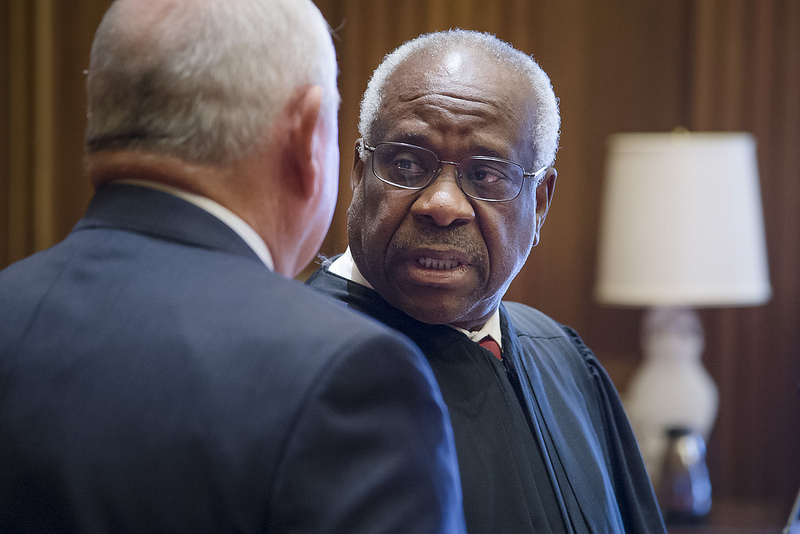
Sonny Perdue is sworn in as the 31st Secretary of Agriculture by U.S. Supreme Court Justice Clarence Thomas with his wife Mary and family April 25, 2017, at the Supreme Court in Washington, D.C.. Photo by Preston Keres
In what Peter Van Buren calls “tutorials” from Scotus, the two recent Supreme Court cases, he maintains, prove the system is “flexible for the times and robust in defending the most basic freedoms a democracy is built upon.” Lucky us.
- Rights are for everyone.
- Free speech sometimes protects speech you don’t like yourself.
Affirmative Action = Discrimination
In Students for Fair Admissions, Inc. v. President & Fellows of Harvard College and Students for Fair Admissions, Inc. v. University of North Carolina the Court made the common-sense ruling that discrimination against some races is a poor way to fix discrimination against other races. What woke mind could have possibly conceived that the 14th Amendment’s establishment of equal protection under the law meant treating a large portion of the population unfairly at the expense of another?
The word for this back in the day was not racism (which it was) but “affirmative action.” It would right wrongs. This “reverse discrimination” was allowed through some clever word play because its goal of a diverse student body was considered a “compelling state interest” that overshadowed other compelling interests, such as equal protection under the law.
It was sanctioned by the Supreme Court of its day, but only as a temporary solution; Justice Sarah Day O’Connor in one of the key cases upholding affirmative action wrote, “We expect that twenty-five years from now, the use of racial preferences will no longer be necessary to further the interest approved today.”
What woke mind could have possibly conceived that the 14th Amendment’s establishment of equal protection under the law meant treating a large portion of the population unfairly at the expense of another?
The Point of the 1st Amendment
At the time of the Founding, no one could have conceived of a free speech battle between a web designer and gay clients. An individual may not like everything other people use their freedom of speech to say and do, continues Mr. Van Buren.
In fact, their deeply held beliefs may run 180 degrees away from yours: This is the whole point of the First Amendment free speech clause and it was on display in another recent Supreme Court decision, 303 Creative v. Elenis.
In the 303 Creative v. Elenis, one web designer, wanted to know what would happen if she refused to produce a hypothetical celebratory wedding page for a gay couple, claiming her religion did not allow her to support same-sex marriage. The couple would have sued, because of course they would, probably claiming a part of a protected class by sex in Colorado.
Robust Amendments
Mr. Van Buren believes that it would have been easy to write off the Court’s decision in Students for Fair Admissions as discriminatory, “with only a little thought that what it does away with—affirmative action—is discriminatory as heck.”
Same for 303 Creative v. Elenis, which is being promoted by the MSM as anti-LGBT when in fact it is an example of how robust our First Amendment is.
The Supreme Court has not gone rogue, argues Mr. Van Buren. And democracy is not in danger.
If you’re willing to fight for Main Street America, click here to sign up for the Richardcyoung.com free weekly email.





